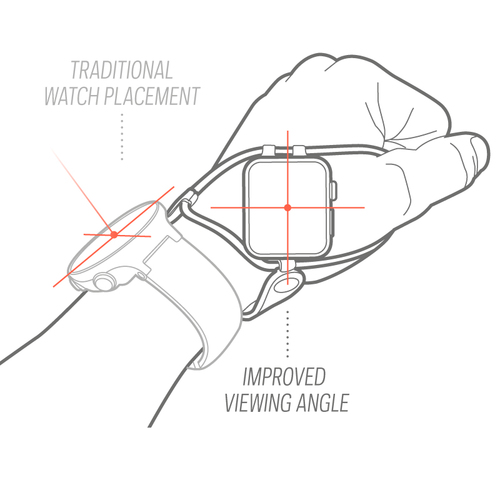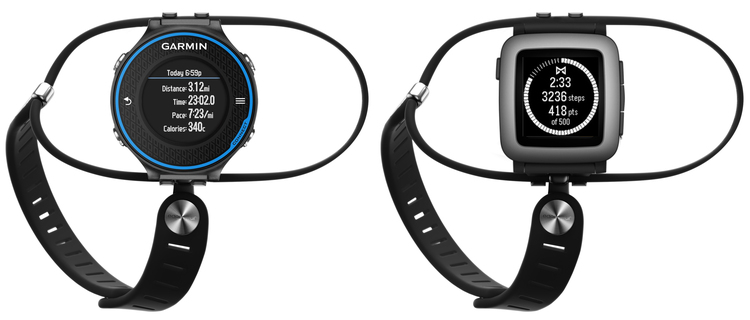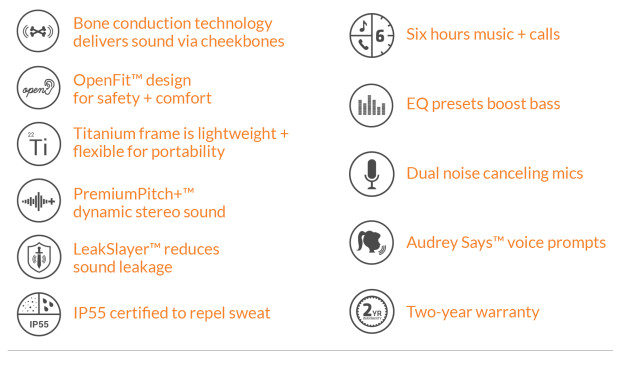Matt Fitzgerald provides a simple-to-follow 16 week training plan for the half Ironman distance. Read more at
Variety is overrated in triathlon training. It’s certainly important, but coaches often make it out to be more important than repetition when the opposite is true. There are only a handful of workout types that you need to include in your training program. You can practice these basic types of workouts in all kinds of different ways, and doing so may make the training process more interesting for you, but there is no particular physiological advantage of complex training compared to basic training.
I favor simple training plans for a few reasons. First, I find them to be less mentally stressful than complex training plans. Why make your training so complex that it is unnecessarily mentally taxing in addition to being necessarily physically taxing? Second, the results of a very basic, and highly repetitive, training plan are predictable, and predictability of effects is a major virtue in a training plan. You want to know exactly what you’re going to get out of it. When your workouts are always familiar, there’s little mystery about what they will do for you. Finally, it’s easier to measure and monitor progress in a training plan with lots of repetition. You can make apples-to-apples comparisons of your performance in difference instances of the same workout, whereas such comparisons are more difficult when you never do the same workout twice. This is important, because seeing progress inspires future progress.
Of course, a training plan has to have some variation. First, the overall workload has to increase as it goes along. Second, the key workouts must become more race-specific. The following is a super simple 16-week training plan for half-iron-distance racing. It features nine workouts per week—three swims, three rides, and three runs—and is appropriate for “intermediate” level athletes.
You will find the workout descriptions self-explanatory for the most part, but the intensity and pacing guidelines require some explanation. Here’s a key to understanding them:
5K race pace = An effort performed at approximately the fastest pace you could sustain in a 5K running race.
10K race pace = An effort performed at approximately the fastest pace you could sustain in a 10K running race.
Comfortably hard = An effort that is right on the threshold of making you really suffer.
Easy = A very comfortable effort, deliberately slower than your natural pace in swimming, cycling or running.
Hard = An effort that is very challenging but not maximal for the prescribed duration (such that a two-minute hard effort is performed at a slightly faster pace than a three-minute hard effort).
Jog = Very slow running.
Moderate = An effort that feels comfortable but not dawdling.
Race pace = An effort performed at your anticipated half-iron-distance race pace.
Sprint = A 100 percent maximal effort.
Time trial = A maximal effort relative to the prescribed distance.
Week 1
Monday: Rest.
Tuesday: Bike 40 minutes moderate with 4 x 30-second sprints scattered.
Wednesday: Swim 800 yards total. Main set: 8 x 25 yards, rest interval (RI) = 20 seconds. | Run 4 miles moderate + 2 x 10-second hill sprints.
Thursday: Bike 40 minutes moderate.
Friday: Swim 800 yards total. Main set: 3 x 100 yards race pace, RI = 15 seconds. | Run 4 miles moderate.
Saturday: Bike 20 miles moderate.
Sunday: Run 6 miles moderate. | Swim 800 yards moderate.
Week 2
Monday: Rest.
Tuesday: Bike 40 minutes moderate with 6 x 30-second sprints scattered.
Wednesday: Swim 850 yards total. Main set: 10 x 25 sprints, RI = 20 seconds. | Run 4 miles moderate + 4 x 10-second hill sprints.
Thursday: Bike 40 minutes moderate + 5 minutes comfortably hard.
Friday: Swim 850 yards total. Main set: 4 x 100 yards race pace, RI = 15 seconds. | Run 4 miles moderate.
Saturday: Bike 25 miles moderate.
Sunday: Run 7 miles moderate. | Swim 1,000 yards moderate.
Week 3
Monday: Rest.
Tuesday: Bike 40 minutes with 8 x 30-second sprints scattered.
Wednesday: Swim 900 yards total. Main set: 12 x 25 sprints, RI = 20 seconds. | Run 4 miles moderate + 6 x 10-second hill sprints.
Thursday: Bike 40 minutes moderate + 8 minutes comfortably hard.
Friday: Swim 900 yards total. Main set: 3 x 200 yards race pace, RI = 15 seconds. | Run 4.5 miles moderate.
Saturday: Bike 30 miles moderate.
Sunday: Run 8 miles moderate. | Swim 1,200 yards moderate.
Week 4 (Recovery)
Monday: Rest.
Tuesday: Bike 40 minutes with 6 x 30-second sprints scattered.
Wednesday: Swim 800 yards total. Main set: 8 x 25 sprints, RI = 20 seconds. | Run 4 miles moderate + 4 x 10-second hill sprints.
Thursday: Bike 40 minutes moderate + 5 minutes comfortably hard.
Friday: Swim 800 yards total. Main set: 3 x 100 yards race pace, RI = 15 seconds. | Run 4 miles moderate.
Saturday: Bike 25 miles moderate.
Sunday: Run 7 miles moderate. | Swim 1,000 yards moderate.
Week 5
Monday: Rest.
Tuesday: Bike 45 minutes with 8 x 1-minute hard efforts scattered.
Wednesday: Swim 1,000 yards total. Main set: 6 x 50 sprints, RI = 20 seconds. | Run 4.5 miles with 6 x 30-second hard efforts scattered.
Thursday: Bike 40 minutes moderate + 8 minutes comfortably hard.
Friday: Swim 1,000 yards total. Main set: 2 x 200 yards race pace, RI = 30 seconds. | Run 4.5 miles moderate + 4 x 10-sec. hill sprints.
Saturday: Bike 35 miles moderate + 10-minute transition run at moderate pace.
Sunday: Run 9 miles moderate. | Swim 1,400 yards moderate.
Week 6
Monday: Rest.
Tuesday: Bike 45 minutes with 6 x 2-minute hard efforts scattered.
Wednesday: Swim 1,100 yards total. Main set: 8 x 50 sprints, RI = 20 seconds. | Run 4.5 miles with 6 x 45-second hard efforts scattered.
Thursday: Bike 40 minutes moderate + 10 minutes comfortably hard.
Friday: Swim 1,100 yards total. Main set: 3 x 200 yards race pace, RI = 30 seconds. | Run 4.5 miles moderate + 4 x 10-second hill sprints.
Saturday: Bike 40 miles moderate.
Sunday: Run 10 miles moderate. | Swim 1,600 yards total. Main set: 1,000 yard time trial.
Week 7
Monday: Rest.
Tuesday: Bike 45 minutes with 4 x 3-minute hard efforts scattered.
Wednesday: Swim 1,200 yards total. Main set: 10 x 50 sprints, RI = 20 seconds. | Run 4.5 miles with 6 x 1-minute hard efforts scattered.
Thursday: Bike 40 minutes moderate + 12 minutes comfortably hard.
Friday: Swim 1,200 yards total. Main set: 3 x 200 yards race pace, RI = 20 seconds. | Run 5 miles moderate + 4 x 10-second hill sprints.
Saturday: Bike 45 miles moderate + 15-minute transition run at moderate pace.
Sunday: Run 11 miles moderate. | Swim 1,800 yards moderate.
Week 8 (Recovery)
Monday: Rest.
Tuesday: Bike 40 minutes with 6 x 1-minute hard efforts scattered.
Wednesday: Swim 1,000 yards total. Main set: 8 x 50 sprints, RI = 20 seconds. | Run 4.5 miles with 6 x 30-second hard efforts scattered.
Thursday: Bike 40 minutes moderate + 8 minutes comfortably hard.
Friday: Swim 1,000 yards total. Main set: 2 x 200 yards race pace, RI = 20 seconds. | Run 4 miles moderate.
Saturday: Bike 35 miles moderate.
Sunday: Run 9 miles moderate. | Swim 1,400 yards moderate.
Week 9
Monday: Rest.
Tuesday: Bike 50 minutes with 6 x 2-minute hard efforts scattered.
Wednesday: Swim 1,300 yards total. Main set: 6 x 75 sprints, RI = 20 seconds. | Run 1 mile easy, 8 x 600m at 5K race pace with 400m jog recoveries, 1 mile easy.
Thursday: Bike 40 minutes moderate + 15 minutes comfortably hard.
Friday: Swim 1,300 yards total. Main set: 2 x 300 yards race pace, RI = 30 seconds. | Run 5 miles moderate + 4 x 10-second hill sprints.
Saturday: Bike 50 miles moderate + 20-minute transition run at moderate pace.
Sunday: Run 12 miles moderate. | Swim 2,000 yards moderate.
Week 10
Monday: Rest.
Tuesday: Bike 50 minutes with 5 x 3-minute hard efforts scattered.
Wednesday: Swim 1,400 yards total. Main set: 8 x 75 sprints, RI = 20 seconds. | Run 1 mile easy, 6 x 800m at 5K race pace with 400m jog recoveries, 1 mile easy.
Thursday: Bike 40 minutes moderate + 18 minutes comfortably hard.
Friday: Swim 1,400 yards total. Main set: 2 x 300 yards race pace, RI = 20 seconds. | Run 5.5 miles moderate + 4 x 10-second hill sprints.
Saturday: Bike 55 miles moderate.
Sunday: Run 13 miles moderate. | Swim 2,000 yards total. Main set: 1,500 time trial.
Week 11
Monday: Rest.
Tuesday: Bike 55 minutes with 4 x 4-minute hard efforts scattered.
Wednesday: Swim 1,500 yards total. Main set: 10 x 75 sprints, RI = 20 seconds. | Run 1 mile easy, 5 x 1,000m at 5K race pace with 400m jog recoveries, 1 mile easy.
Thursday: Bike 40 minutes moderate + 20 minutes comfortably hard.
Friday: Swim 1,500 yards total. Main set: 3 x 300 yards race pace, RI = 30 seconds. | Run 6 miles moderate + 4 x 10-second hill sprints.
Saturday: Bike 60 miles moderate + 10-minute transition run at race pace.
Sunday: Run 14 miles moderate. | Swim 2,200 yards moderate.
Week 12 (Recovery)
Monday: Rest.
Tuesday: Bike 45 minutes with 5 x 2-minute hard efforts scattered.
Wednesday: Swim 1,300 yards total. Main set: 6 x 75 sprints, RI = 20 seconds. Run 2 miles easy, 1 miles at 10K race pace, 2 miles easy.
Thursday: Bike 40 minutes moderate + 10 minutes comfortably hard.
Friday: Swim 1,300 yards total. Main set: 2 x 300 yards race pace, RI = 30 seconds. | Run 5 miles moderate.
Saturday: Bike 45 miles moderate.
Sunday: Run 10 miles moderate. | Swim 2,000 yards moderate.
Week 13
Monday: Rest.
Tuesday: Bike 20 minutes easy, 20 minutes comfortably hard, 20 minutes easy.
Wednesday: Swim 1,600 yards total. Main set: 6 x 100 sprints, RI = 20 seconds. | Run 2 miles easy, 2 miles at 10K race pace, 2 miles easy.
Thursday: Bike 45 minutes with 5 x 2-minute hard efforts scattered.
Friday: Swim 1,600 yards total. Main set: 2 x 400 yards race pace, RI = 30 seconds. | Run 6 miles moderate + 4 x 10-second hill sprints.
Saturday: Bike 50 miles moderate + 10 miles race pace + 15-minute transition run at race pace.
Sunday: Run 10 miles moderate + 2 miles race pace. | Swim 2,200 yards total. Main set: 500 yards race pace.
Week 14
Monday: Rest.
Tuesday: Bike 20 minutes easy, 25 minutes comfortably hard, 15 minutes easy.
Wednesday: Swim 1,800 yards total. Main set: 8 x 100 sprints, RI = 20 seconds. | Run 2 miles easy, 3 miles at 10K race pace, 2 miles easy.
Thursday: Bike 45 minutes with 4 x 3-minute hard efforts scattered.
Friday: Swim 1,600 yards total. Main set: 2 x 400 yards race pace, RI = 20 seconds. | Run 6 miles moderate + 4 x 10-second hill sprints.
Saturday: Bike 45 miles moderate + 15 miles race pace + 20-minute transition run at race pace.
Sunday: Run 12 miles moderate + 2 miles race pace. | Swim 2,400 yards total. Main set: 600 yards race pace.
Week 15
Monday: Rest.
Tuesday: Bike 15 minutes easy, 30 minutes comfortably hard, 15 minutes easy.
Wednesday: Swim 2,000 yards total. Main set: 10 x 100 sprints, RI = 20 seconds. | Run 2 miles easy, 3 miles at 10K race pace, 2 miles easy.
Thursday: Bike 45 minutes with 8 x 1-minute hard efforts scattered.
Friday: Swim 1,600 yards total. Main set: 2 x 400 yards race pace, RI = 30 seconds. | Run 4.5 miles moderate + 4 x 10-second hill sprints.
Saturday: Bike 40 miles moderate + 10 miles race pace + 10-minute transition run at race pace.
Sunday: Run 12 miles moderate + 2 miles race pace (beat last week’s time). | Swim 2,400 yards total. Main set: 600 yards race pace (beat last week’s time).
Week 16
Monday: Rest.
Tuesday: Bike 10 minutes easy, 10 minutes comfortably hard, 10 minutes easy.
Wednesday: Swim 1,300 yards total. Main set: 5 x 100 sprints, RI = 20 seconds. | Run 2 miles easy, 1 mile at 10K race pace, 2 miles easy.
Thursday: Bike 45 minutes with 5 x 30-second sprints scattered.
Friday: Swim 800 yards total. Main set: 400 yards race pace. | Run 3 miles easy.
Saturday: Swim 10 minutes easy with 4 x 30 seconds at race pace. | Bike 10 minutes with 4 x 30 seconds fast. | Run 10 minutes with 4 x 20 seconds at 90 percent effort.
Sunday: RACE!

























